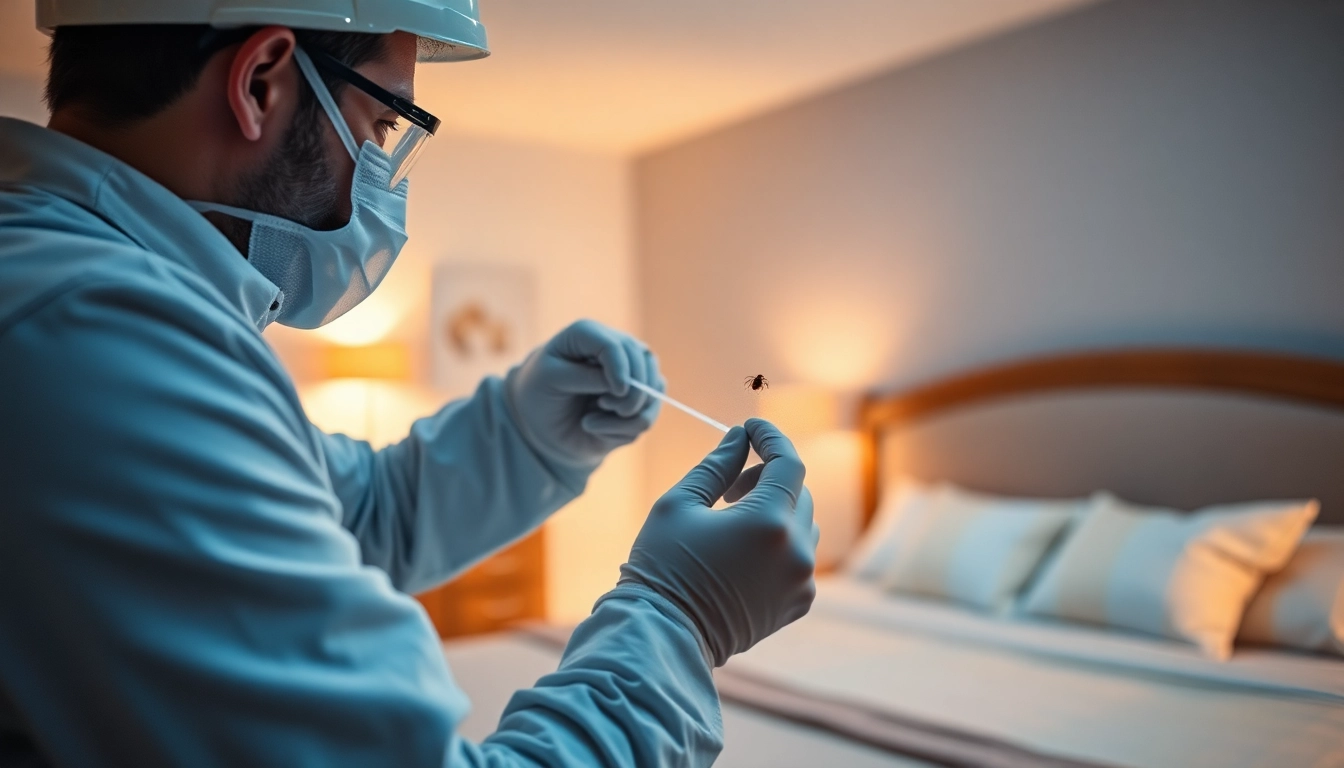Bed bugs are a common nuisance that can invade even the cleanest of homes, causing discomfort and anxiety for those who find themselves battling these pests. Understanding effective bed bug pest control strategies is crucial for reclaiming your space and restoring peace of mind. This article delves deep into the intricacies of identifying, treating, and preventing bed bug infestations, ensuring readers have the information needed to effectively manage and eliminate these unwelcome visitors.
Understanding Bed Bug Infestations
Identifying Common Signs of Bed Bugs
Identifying signs of a bed bug infestation early is crucial for effective control. Some of the most common indicators include:
- Visible Bugs: Adult bed bugs are small, about the size of an apple seed, and are brownish in color. They may be seen in bed seams, behind headboards, or in furniture seams.
- Bites on Skin: Bed bug bites typically appear as small, red, itchy welts or bumps on exposed skin, often in a linear pattern.
- Dark Spots: Look for small, dark spots of bed bug excrement on sheets, mattresses, or walls—often referred to as “bed bug poop.”
- Eggs and Shed Skins: Bed bug eggs resemble tiny white grains of rice and can be found in clusters. Shed skins are also a common sign, as bed bugs molt several times throughout their life cycle.
Life Cycle of Bed Bugs Explained
Understanding the life cycle of bed bugs is vital in eradicating them effectively. Bed bugs go through five stages of growth, including:
- Egg: Each female bed bug lays around 200-500 eggs in her lifetime, which hatch in about 6-10 days.
- Nymph: After hatching, the newly emerged nymph undergoes five molts before reaching maturity, requiring a blood meal after each molt for growth.
- Adult: Adult bed bugs are capable of reproducing after a few weeks of feeding, making it essential to treat infestations as soon as possible.
The Importance of Early Detection
Early detection of bed bugs prevents a minor issue from escalating into a significant infestation. Regular inspections and awareness of the signs can facilitate early intervention, which is often less costly and more effective. Homeowners should routinely check areas where bed bugs are likely to hide and maintain vigilance when traveling, as hotel rooms are common sources of new infestations.
Effective Methods of Bed Bug Pest Control
Utilizing Heat Treatment for Bed Bugs
Heat treatment is one of the most effective methods for controlling bed bug infestations. It involves raising the temperature in an infested area to above 120°F (49°C), which is lethal to bed bugs at all life stages. The advantages of heat treatment include:
- Quick Results: Unlike chemical methods that may require multiple applications, heat treatment can often eradicate bugs in a single session.
- No Residues: This method eliminates the need for chemical pesticides, making it safer for children and pets.
- Accessibility: Heat can penetrate into crevices and voids where bed bugs hide, ensuring thorough elimination.
However, heat treatment requires specialized equipment and should be performed by professional pest control specialists to ensure safety and effectiveness.
Safe Chemical Options for Treatment
If heat treatment is not feasible, chemical solutions can be used, but these should be applied with caution. Some effective chemical treatments include:
- Insecticides: The use of EPA-approved insecticides can target bed bugs on contact as well as residual formulas that can kill bugs that emerge later.
- Desiccants: Products like diatomaceous earth or silica gel absorb moisture from the bugs, leading to dehydration and death over time.
- Growth Regulators: These chemical agents disrupt the bed bug life cycle by preventing eggs from hatching and nymphs from maturing into adults.
It is recommended to consult with pest control professionals to identify the most suitable treatment options and ensure safety during application.
Integrated Pest Management (IPM) Explained
Integrated Pest Management (IPM) is a holistic approach to pest control that combines multiple strategies for maximum effectiveness. Key components include:
- Monitoring: Regular inspection allows for early detection and intervention.
- Prevention: Strategies such as sealing cracks, reducing clutter, and proper sanitation help minimize the risk of infestations.
- Control Methods: The IPM approach employs a mix of chemical, biological, and physical control methods tailored to the specific infestation.
This comprehensive strategy addresses the immediate pest problem while also providing solutions for long-term management and prevention.
Preparing Your Space for Bed Bug Treatment
Steps to Take Before Treatment
Preparation is crucial to ensuring that bed bug treatments are effective. Homeowners should follow these steps:
- Clear and Clean: Remove clutter, and thoroughly vacuum carpets and surfaces to reduce hiding spots.
- Launder Fabrics: Wash all bedding, clothing, and stuffed animals in hot water and dry them on high heat to kill any hidden bugs or eggs.
- Seal Items: Place infested items in airtight bags to prevent the spread of bed bugs while awaiting treatment.
Understanding What to Expect During Treatment
Knowing what to expect during pest control treatment can alleviate concerns. When professionals conduct treatment, they typically:
- Conduct a thorough inspection of the affected areas.
- Apply the chosen treatment method, whether heat or chemical.
- Provide guidance on post-treatment best practices to prevent re-infestation.
Post-Treatment Care and Maintenance
After treatment, homeowners should maintain stringent cleaning practices, continue inspecting for signs of bed bugs, and follow up as instructed by pest control professionals to ensure complete extermination and to prevent reinfestation.
Cost Considerations for Bed Bug Pest Control
Factors Affecting Treatment Costs
The cost of bed bug pest control varies widely based on factors such as:
- Severity of Infestation: More extensive infestations requiring multiple treatments will increase costs.
- Type of Treatment: Heat treatments are often more expensive than chemical solutions but can be more effective.
- Location: Costs might vary based on geographical location and the local market for pest control services.
Comparing DIY Options vs. Professional Services
While DIY solutions can be tempting, they often lack the effectiveness and comprehensiveness of professional services. The risks include:
- Possibly re-inviting the infestation if the treatment isn’t thorough.
- Exposure to potentially harmful chemicals without proper experience.
- Significant time and effort required for multiple DIY attempts, often with poor results.
Investing in professional pest control services can save time and ensure a thorough, effective treatment plan.
How to Budget for Effective Extermination
Homeowners should consider allocating a budget that accounts for both immediate treatment and long-term prevention. Planning for regular inspections and maintenance can significantly reduce the likelihood of future infestations and associated costs.
Preventing Future Bed Bug Infestations
Best Practices for Avoiding Bed Bugs
Preventative measures are the best defense against bed bugs. Effective strategies include:
- Careful Travel Practices: Always inspect hotel rooms and luggage for signs of bed bugs.
- Regular Inspections: Conduct periodic checks of the home, particularly in sleeping areas.
- Educating Others: Ensure family and friends understand how to recognize and prevent bed bug infestations.
Regular Inspections and Maintenance Tips
Regularly inspecting and maintaining your living space is key to early detection. Key practices include:
- Checking seams of mattresses and headboards for signs of bed bugs.
- Using a flashlight to inspect dimly lit areas and behind furniture.
- Utilizing bed bug monitors and traps in sleeping areas.
The Role of Mattress Encasements and Protective Covers
Investing in high-quality mattress and box spring encasements can provide an effective barrier against bed bugs. These encasements:
- Protect against infestations by sealing the mattress.
- Facilitate easier cleaning and maintenance, reducing hiding spots.
- Extend the life of bedding products by preventing wear and tear.
Incorporating these products into your bedding routine is a proactive step in bed bug prevention.



